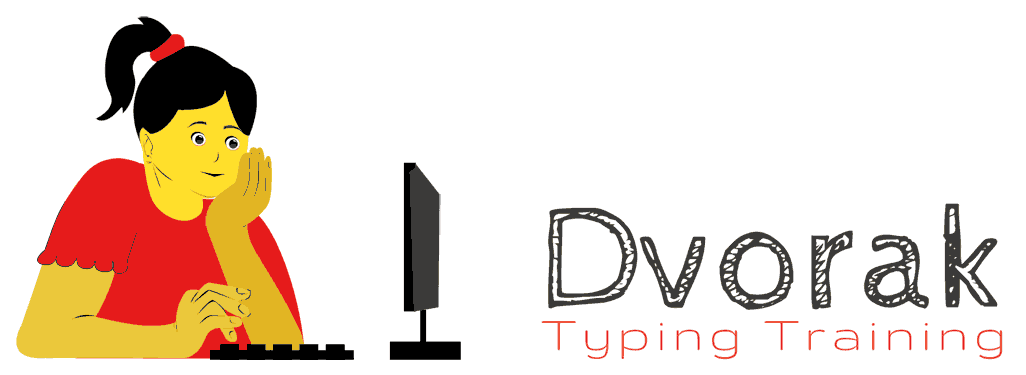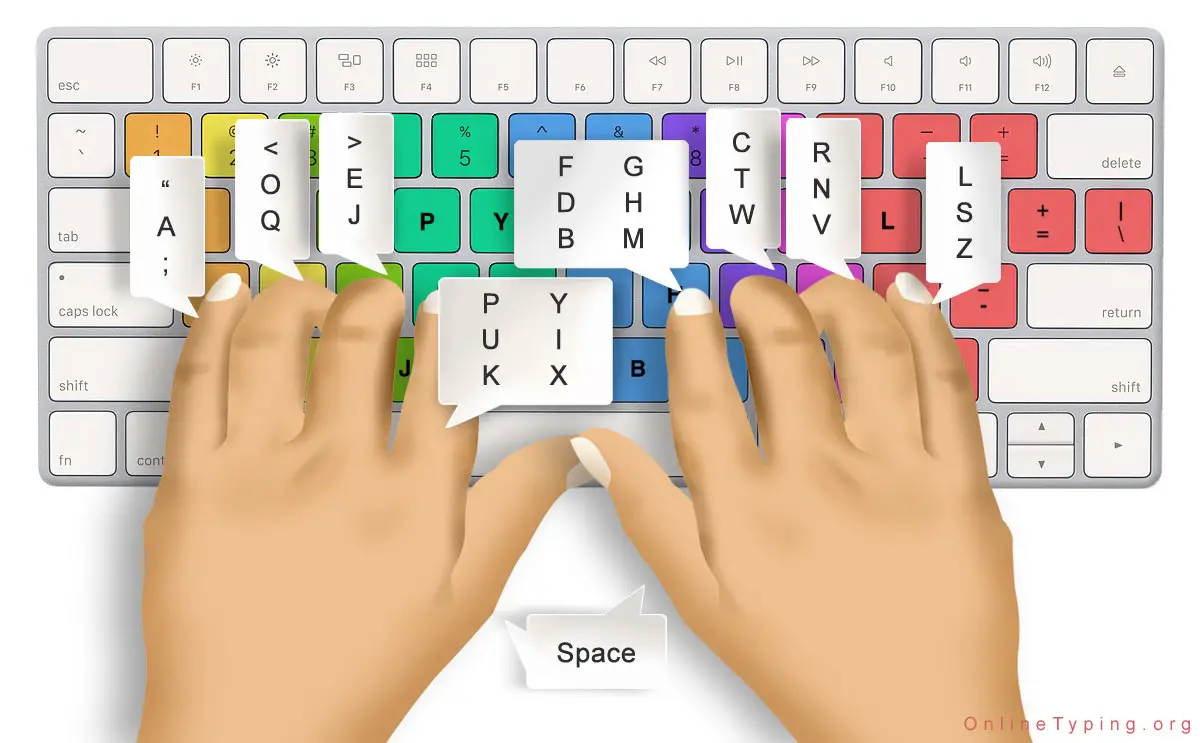
Dvorak Typing Practice Program
Welcome to the Dvorak typing practice and training program, where you can learn to type on a Dvorak keyboard.
Please read the Dvorak typing rules before start practicing.August Dvorak designed the Dvorak keyboard in the year 1936. August Dvorak believes that the traditional QWERTY keyboard layout is too old and not scientifically designed to type fast. So he did some research and created a more advanced keyboard layout where you could type 282+ commonly used English words using only the home row keys. We have a detailed discussion on different keyboard layouts here: Best keyboard layout for typing
Touch typing is the only way to make your typing fast. And to learn touch typing, you need to know the proper finger position first. Pressing the correct key using the proper finger is essential. You simply can't press any key with any of your fingers. So the first thing that we need to learn is the right finger position on a keyboard.
Like a QWERTY keyboard, Dvorak also has a home row, where you need to place your fingers after every keystroke.
Dvorak touch typing finger position

Dvorak typing rules
First, we need to understand what finger we should use to press which key. Place the index finger of your left hand over the U key and your right-hand index finger over the H key. Now place the middle finger of your right hand over T and your left hand on E. The N letter should be pressed by the ring finger of your right hand and O by the ring finger of your left hand. Use the pinky finger of your right hand to push the S letter, and the small finger of your left hand will use to hit the letter A.
This series of keys is called home row. You need to place your fingers over the home row, and after every keystroke, you need to get back your fingers to their previous position.
Now you need to know what key should be pressed by which finger. The F, D, B, G, H, and M these keys must be pushed by the index finger of your right hand. On the other side, use the left-hand index finger to hit the P, U, K, Y, I, and X keys. The middle finger of your right hand is used to press the C, T, and W letters and the middle finger of your left hand to hit the greater-than sign (>) key and letter E & J. The R, N, and V these letters must be pressed by the ring finger of your right hand. The less-than sign, O and Q, must be pressed by the ring finger of your left hand. Use the small finger of your right hand to press L, S, and Z letters & use the left small finger to hit semicolons, quotation marks and letter A.

This is the fundamental principle of touch typing. Once you understand the correct finger position, you need to practice slowly. Pushing too much can lead to mistyping. And ultimately, this reduces the accuracy level.
To practice, use our special 30 days Dvorak typing practice program, where you can practice step by step and easily learn to type on a Dvorak keyboard.